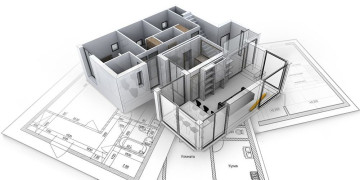lawyer, 23 years of experience in enforcement.
Rehabilitation of the debtor, this is one of the procedures for recognizing the debtor as bankrupt, during which measures are taken to restore the debtor's solvency.
According to Part 5 of Art. 48 of the Code of Ukraine on Bankruptcy Procedures, the competence of the creditors' meeting is to make a decision on the approval of the debtor's rehabilitation plan
It is worth noting that the rehabilitation procedure can also take place out of court before the opening of bankruptcy proceedings, in accordance with Art. 5 of the Code.
Before the end of the procedure for disposing of the debtor's property, the meeting of creditors makes a decision on the approval of the rehabilitation plan and the submission to the commercial court of a petition for the introduction of the rehabilitation procedure and approval of the rehabilitation plan.
The requirements for the rehabilitation plan are contained in Art. 51 of the Code of Ukraine on bankruptcy procedures.
According to Art. 52 of the Code, in order to make a decision on approval or rejection of the rehabilitation plan, all bankruptcy creditors are divided into classes that depend on the order of creditors.
Approval or rejection of the rehabilitation plan is taken by the creditors of each class separately by voting.
Part 4 of Art. 52 of the Code provides for the peculiarities of voting during meetings of each class of creditors.
The adopted decision based on the voting results is formalized in the minutes of the meeting of creditors.
According to Part 6 of Art. 52 of the Code of Ukraine on Bankruptcy Procedures, the reorganization plan and voting protocols of each class of creditors are submitted by the property administrator to the commercial court within 1 working day after the voting.
The provisions of Art. 49 of the Code, it is established that, based on the results of the final meeting, the commercial court can issue a resolution on the introduction of the rehabilitation procedure and the approval of the rehabilitation procedure in the event that the debtor's rehabilitation plan is approved by the creditors' meeting and approved by the secured creditors.
According to the result of the review, the commercial court:
- issues a resolution approving the rehabilitation plan;
- passes a decision on rejecting the rehabilitation plan;
- passes a resolution on declaring the debtor bankrupt and opening the liquidation procedure (see General bankruptcy procedure of a legal entity).
In accordance with Part 9 of Art. 52 of the Code of Ukraine on Bankruptcy Procedures, the commercial court adopts a resolution declaring the debtor bankrupt and opening the liquidation procedure if the rehabilitation plan is not approved by the court within the time limit established by the Code (for the procedure for disposing of the debtor's property, the maximum time limit is up to 170 days).
Part of the 7th Art. 52 of the Code of Ukraine on Bankruptcy Procedures establishes a list of requirements, in case of compliance with which the rehabilitation plan is approved by a corresponding resolution.
The official announcement of the introduction of the rehabilitation procedure is carried out on the web portal of the judicial authorities of Ukraine.
According to Part 8 of Art. 52 of the Code of Ukraine on Bankruptcy Procedures, the commercial court issues a decision on refusal to approve the rehabilitation plan if it does not meet the requirements of the law. Such a decision does not prevent the resubmission to the court of the rehabilitation plan approved by the meeting of creditors for its approval.
The commercial court appoints a rehabilitation manager from among the arbitration managers, in accordance with Art. 28 of the Code of Ukraine on bankruptcy procedures.
The decision of the commercial court, in accordance with Part 3 of Art. 50 of the Code enters into force from the date of its adoption.
In accordance with Part 4 of Art. 50 of the Code from the moment of the resolution on the introduction of the rehabilitation procedure:
- members of the executive body (head) of the debtor are dismissed from their positions in accordance with the procedure established by law;
- management of the debtor passes to the rehabilitation manager;
- the powers of the management bodies of the debtor - a legal entity regarding the management and disposal of the debtor's property are suspended, the powers of the management bodies are transferred to the manager of rehabilitation, except for the powers provided for in the rehabilitation plan.
Parts 4-9 of Art. 50 of the Code of Ukraine on Bankruptcy Procedures defines the set of rights and responsibilities of the rehabilitation manager.
According to Art. 53 of the Code, in order to restore the debtor's solvency, the rehabilitation plan may provide for an increase in the authorized capital of the debtor in the amount established by the rehabilitation plan.
In accordance with the provisions of Articles 54-55 of the Code, in order to restore the debtor's solvency and meet the demands of creditors, the rehabilitation plan may provide for the sale or alienation of all or part of the debtor's property, if it constitutes a single property complex or several single property complexes.
Article 56 of the Code allows for the purpose of restoring the debtor's solvency and meeting the demands of creditors, the sale of a part of the debtor's property other than that specified in Articles 54 and 55 of the Code.
According to Part 1 of Art. 57 of the Code of Ukraine on Bankruptcy Procedures, 15 days before the end of the rehabilitation procedure period defined by the rehabilitation plan, as well as if there are grounds for terminating the rehabilitation procedure, the rehabilitation manager is obliged to submit a written report to the meeting of creditors and inform the creditors about the time and place of the meeting of creditors.
Part 2 of Art. 57 of the Code establishes the requirements to which the remediation manager's report must comply. The report is accompanied by evidence of satisfaction of creditors' claims in accordance with the register of creditors' claims.
The report of the rehabilitation manager must be considered by the meeting of creditors no later than 10 days after its receipt and no later than the end of the rehabilitation period specified in the rehabilitation plan (Part 4 of Article 57 of the Code of Ukraine on Bankruptcy Procedures).
Based on the results of the review of the report, the meeting of creditors makes a decision on:
- closing the proceedings in connection with the implementation of the rehabilitation plan and restoration of the debtor's solvency;
- termination of the rehabilitation procedure, recognition of the debtor as bankrupt and opening of the liquidation procedure;
- approval of changes to the remediation plan and extension of the period of the remediation procedure.
According to part 7 of Art. 57 of the Code of Ukraine on Bankruptcy Procedures, the report of the rehabilitation manager, considered by the meeting of creditors, and the protocol of the meeting of creditors no later than 5 days after the date of such meeting are sent to the commercial court.
A register of creditors' claims and complaints of creditors (if any) who voted against the decision adopted by the meeting of creditors or did not participate in the vote are attached to the report of the restructuring manager.
The report of the rehabilitation manager and the complaints of creditors are considered at a meeting of the commercial court. The rehabilitation manager and the creditors who filed complaints are notified of the time and place of such a review.
Accordingly, a resolution is issued on the approval of the remediation manager's report or on the refusal to approve the relevant report.
According to Part 9 of Art. 57 of the Code of Ukraine on Bankruptcy Procedures, if the meeting of creditors made a decision to close proceedings in the case in connection with the implementation of the rehabilitation plan and restoration of the debtor's solvency, the report of the rehabilitation manager is subject to approval by the commercial court.
The extension of the rehabilitation period is carried out by the commercial court after making appropriate changes (additions) to the debtor's rehabilitation plan. Changes to the rehabilitation plan are approved by the meeting of creditors and approved by the commercial court in accordance with the requirements of the Code.
If, after the court has issued a decision on refusal to approve the report of the rehabilitation manager, the period of the relevant procedure has expired, provided there is no request for an extension of the period in connection with the approval of the relevant changes to the rehabilitation plan, the commercial court shall declare the debtor bankrupt and open the liquidation procedure (Part 11 of Article 57 of the Bankruptcy Code of Ukraine).
The approval of the reorganization manager's report or the early termination of the reorganization procedure entails the termination of the arbitration manager's powers as the reorganization manager, which is stated in the relevant court decision (Part 7 of Article 50 of the Code of Ukraine on Bankruptcy Procedures).
Settlements with creditors are carried out by the rehabilitation manager in accordance with the procedure established by the rehabilitation plan.
In case of closure of bankruptcy proceedings, within 5 days from the date of adoption of the relevant decision by the commercial court, the rehabilitation manager notifies the body or official of the body whose competence is the appointment of the head of the debtor, if necessary, convenes a general meeting or meeting of the relevant body and continues to perform authority of the debtor's manager before the appointment of the manager) in the established order.
So, as can be seen from the above, the rehabilitation procedure is quite important in the right to declare a debtor bankrupt, it is advisable to get the services of a lawyer or sound advice of a lawyer.
Legal service "Consultant" provides all types of legal services, including online legal services. Specialists of our service will make a legal analysis of the situation for the rehabilitation procedure and help collect the necessary documents and, if necessary, accompany the court process.
































